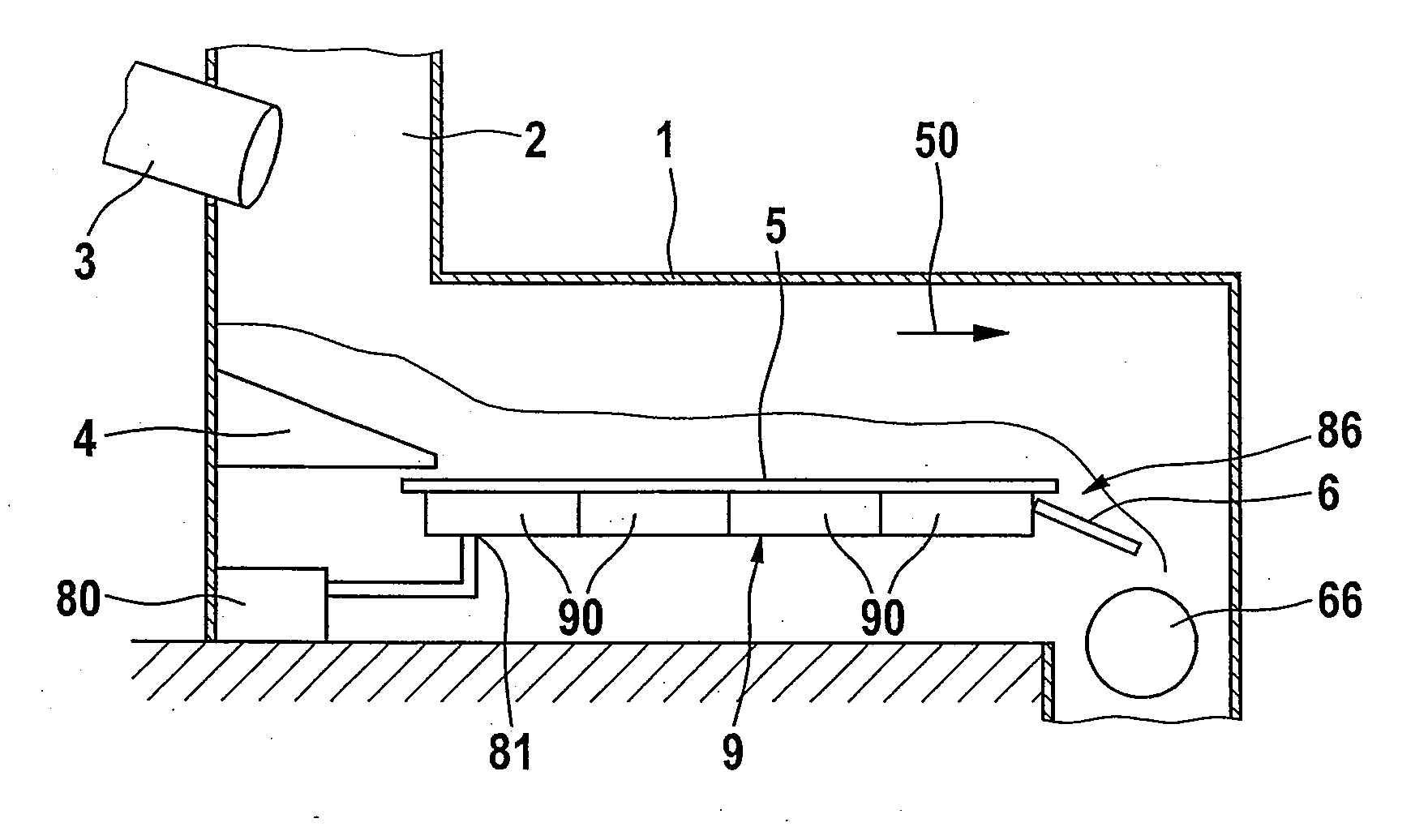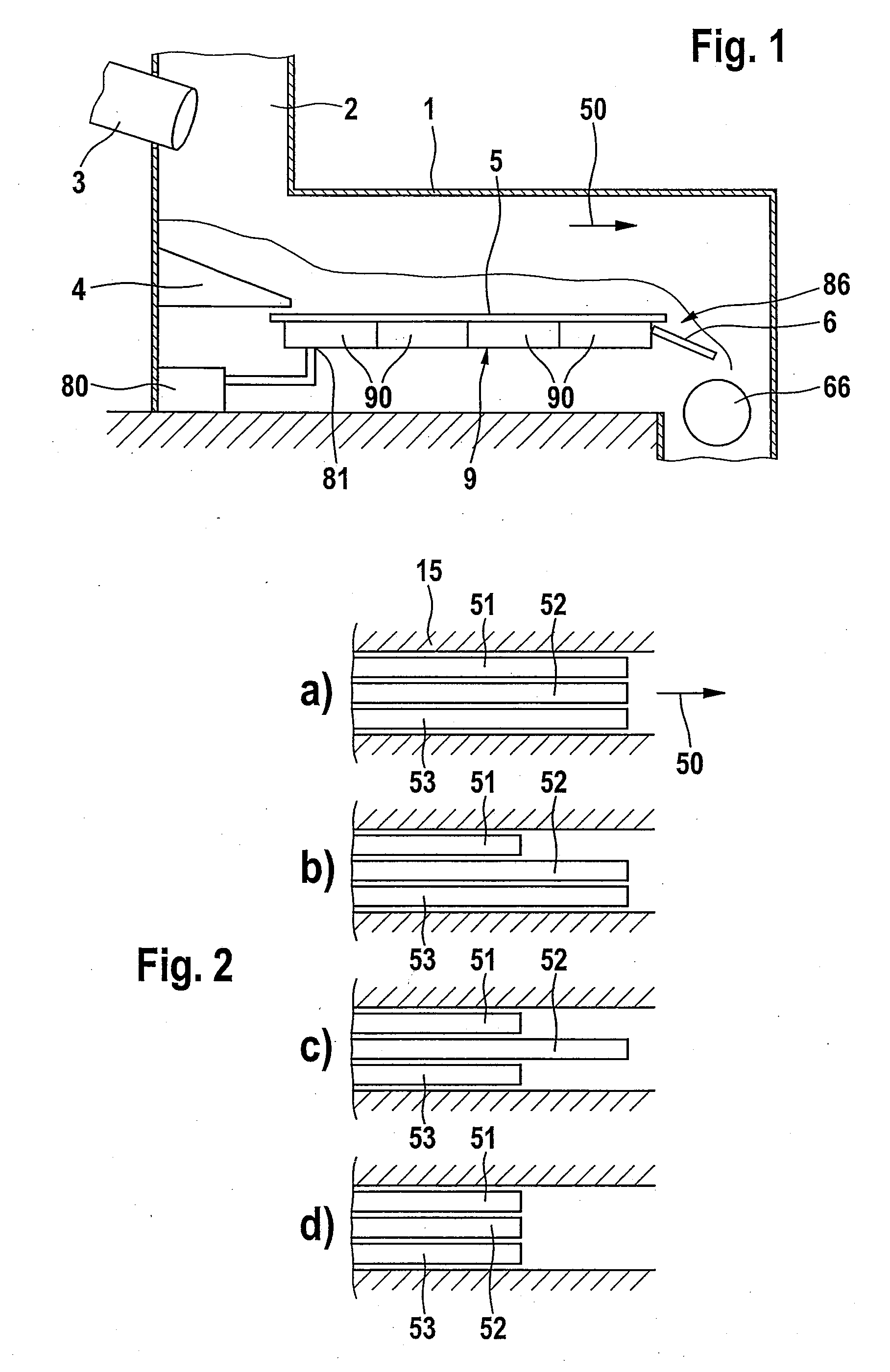Cooler for bulk material having a sealing device between adjoining conveying planks
a technology of sealing device and bulk material, which is applied in the direction of lighting and heating apparatus, discharged material handling, combustion process, etc., can solve the problems of material falling into the grate pit, affecting the operation of the cooling apparatus, so as to eliminate the risk of blockage of the outer sealing element by recycled stray material and ensure the effect of sealing
- Summary
- Abstract
- Description
- Claims
- Application Information
AI Technical Summary
Benefits of technology
Problems solved by technology
Method used
Image
Examples
Embodiment Construction
[0034]In FIG. 1, a schematized view of a cooling apparatus and its integration in a cooling plant is represented. Located at the beginning in a cooler housing 1 is a feed shaft 2, into which a discharge pipe 3 of an upstream rotary furnace (not represented) emerges. Material emanating from the rotary furnace falls into the feed shaft 2 onto a cooling grate, more precisely onto its feed end 4. It has a slightly downward-sloping, ramp-shaped design, so that the deposited material slides in the direction of a horizontally disposed main portion of the grate. If the grate is referred to below without further detail, then this main portion 5 of the cooling grate is meant. It has a plurality of longitudinally movable planks 51-53, which exert a conveying effect upon the material such that it is led away from the feed end 4 and along the grate 5. At the opposing ends, the grate has a delivery end 6, that in the illustrative embodiment is configured as an inclined skidpan. It serves to disch...
PUM
 Login to View More
Login to View More Abstract
Description
Claims
Application Information
 Login to View More
Login to View More - R&D
- Intellectual Property
- Life Sciences
- Materials
- Tech Scout
- Unparalleled Data Quality
- Higher Quality Content
- 60% Fewer Hallucinations
Browse by: Latest US Patents, China's latest patents, Technical Efficacy Thesaurus, Application Domain, Technology Topic, Popular Technical Reports.
© 2025 PatSnap. All rights reserved.Legal|Privacy policy|Modern Slavery Act Transparency Statement|Sitemap|About US| Contact US: help@patsnap.com



